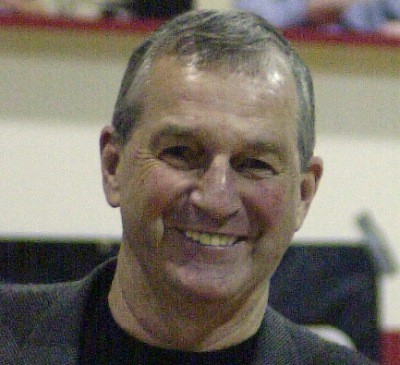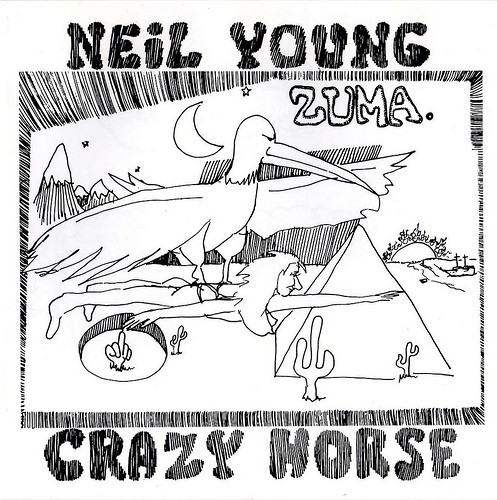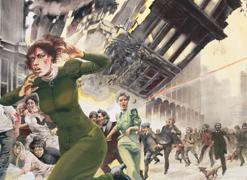'Public Apology,' The Book, Coming Soon
Oh, just announced: there is going to be a book stemming from our longest-running feature, Dave Bry’s Public Apology! Grand Central, the fun group at Hachette, will be publishing. Soon you can feel all the shame, awkwardness and hilarity in one convenient place.
This NYC Cop Rape Case Is the Worst

Unsurprisingly, I’m not particularly enjoying each morning’s report from the New York City police offer rape trial. (Yeah, go figure.) Here’s part one and here’s part two, and it’s a rotten thing to wake up and read. The story, in brief, is that a young woman came home to the East Village intoxicated; she needed help getting out of the cab, so the cabbie called 911; two cops arrived, took her in; paid the cab; and then they returned to her apartment three more times that night. (They said they were discussing her alcoholism with her, which, that’s not something you do while someone has come home while vomiting in a cab; that’s something you do the next day?) On the final visit, one of the officers said that he “succumbed” to “physical contact” after she “became flirtatious” (oh brother) while the other one slept, which, where to even start with that? Why is there even a cop sleeping in some woman’s house after a 911 call???
So… sidebar, can I say something horrible? In case no one has ever told you this before: if you have been, or think you have been, sexually assaulted, please call a friend and visit a hospital, and do not shower or change your clothes, if that is possible. It does not matter if you intend to press charges or not: obtaining a rape kit does not require you to go to the police or talk to the police if you are not interested in doing so. Yes, this is the last thing anyone would want to do! And no, you do not have to do this if you don’t want. (There are huge arguments about this, and I’m not stepping into them, but they boil down to it being your right to do whatever you want, which, of course.) The argument is that getting medical attention allows you to keep your options open, and you will not be placed in the remarkably terrible position of having lawyers describe your sexual assault as consensual sex.
In any event! Yesterday’s story ended on a bizarre note:
Assisted by the district attorney’s office, the woman wore a recording device to confront [police officer] Moreno. He repeatedly denied having sex with her, but finally told her he wore a condom after she threatened to make a scene, [his lawyer] said.
Right, how exactly does that conversation occur in the real world between people who didn’t actually have sex? “No, no no, we didn’t have sex, we didn’t… oh, I see, you are going to make a scene, okay, yes we did but I wore a condom.”
Looking Back At A Gloriously Imperfect Season

Another long college basketball season came to an end last night in perhaps the most unsatisfactory way imaginable. Connecticut head coach Jim Calhoun — one of the game’s least likeable and hardest to root for figures — walked off the floor in glory as Butler, everybody’s Cinderella, thoroughly humiliated itself in its biggest game. It’s impossible to sugarcoat just how bad the final was; it was without a doubt the poorest championship game in memory.
An odd end to what was an odd and, ultimately, probably pretty forgettable season. Here, at the end, let’s look back at some of the major moments and storylines and how they may appear to us in the future, if we bother to look back at all.
Jimmermania
It would be impossible to do a season recap without beginning with the nation’s top scoring white Mormon. Jimmer Fredette, Brigham Young’s gunning guard, captivated college hoops nerds all season long with his AAU brand of offense and penchant for shooting — and making — shots from just inside the half-court line. The college basketball punditry, predominantly white and athletically sports writer-y, took a real shine to Fredette and made him their collective man-crush for the season. Which isn’t to say that Fredette wasn’t fun to watch. Far from it. He was all fun and little else, defense and passing included.
But while Jimmer was worth the price of admission, the bigger story was that his Cougars, along with fellow Mountain West Conference member San Diego State, rose into and then rode along in the national top 10 for much of the season. For two schools in a far off small conference to be so good and so well regarded was a real rarity and made for a fascinating change of polarity in the world of college hoops, which is so often East Coast-focused. While both BYU and San Diego State had plenty of naysayers, the truth is that both proved themselves capable teams, each making the Round of 16, and BYU the Elite Eight, in the NCAA tournament. Were they really top 10 teams? Impossible to know, and who really cares, I suppose, but neither suffered an early exit from the tourney, which was the only thing that would have negated their fine regular seasons and offered fuel for their detractors. What’s clear is that Jimmer, and Aztec forward Kawhi Leonard, would have been All-American players at any school. That they plied their trades in the mid-major MWC was one of the season’s best storylines.
Kyrie Eleison
Entering the season there was really no doubt which team was the heavy favorite to win the national championship. But a season of Duke love and hate was altered dramatically when the principal reason for all that expectation went down with a toe injury. With his speed and raw talent, Blue Devils freshman Kyrie Irving was supposed to be the final piece of a repeat title-winning team. But the point guard pulled up lame in the first half of an early December matchup at Madison Square Garden against, ironically enough, Butler. At the time, no one could have guessed that of the two 2010 finalists it would be Brad Stevens’ then-struggling crew and not the mighty Blue Devils that would get another shot at the championship.
Irving’s injury didn’t appear that bad at first, but it shelved him for the entire rest of the regular season. Coach K made an executive decision to play his rehabbed freshman in the NCAA tournament, a move that looks rash in retrospect. While Irving was good on the floor, the cohesion that had led Duke to a No. 1 seed wasn’t there, particularly in the case of Duke’s best player all year, Nolan Smith. With Irving playing 31 minutes and dominating the ball on offense in Duke’s Sweet 16 loss to Arizona, Smith struggled with his shot, perhaps as a result of being moved off the primary ball-handling duties he had picked up in Irving’s absence. Of course, it’s easy to see, too, why Krzyzewski would want to compete with all his best players in the game. Irving played very well, but the result certainly raises questions about the timing of his return. You won’t see many tears of sympathy for Duke, of course. There were cheers across the land when the Blue Devils fell, and fell hard, in the Sweet 16.
Big, Bad Buckeyes
After Irving’s injury brought Duke down a notch, pundits and analysts devoted immeasurable words and hot air to telling us there were no dominant teams in college hoops. But as January became February, it became clear that Ohio State was — if not the dominant team in the land — the nation’s most complete squad. Led by freshman big man Jared Sullinger, and surrounded by a cast of ace shooters, lockdown defenders and clutch upperclassmen, Thad Matta’s Buckeyes had the look of a sure-fire Final Four team and a good bet to win the whole thing.
Ohio State rose to No. 1 and won its first 24 games before finally taking a first loss in Madison on February 12. Ohio State would only lose twice more — at Purdue two games later and to Kentucky in the Sweet 16, winning the Big Ten regular season and conference titles. After the loss to Kentucky, Sullinger announced to an incredulous media horde that he would be returning for a sophomore season, meaning Ohio State will be a preseason favorite again if that holds. It remains to be seen if the lure of NBA money proves too much for Sullinger and his family to overlook, but so far the biggest Buckeye is sticking to his pledge.
Spartan Glory Hole
Beginning the season, the Big Ten’s Michigan State was widely believed to be the second-best team in the country. Unfortunately for Spartans fans, the team proved to be only good on paper. A typically murderous schedule put together by coach Tom Izzo beat down a team whose players couldn’t ever seem to all play well on the same day. After a stretch of six losses in eight games left Michigan State at 14–11, 6–7 in what proved to be a weaker than expected Big Ten, it seemed entirely likely that the Spartans wouldn’t even make the NCAA tournament, something that was unthinkable when the season began. Izzo and Company managed to cobble together enough wins to gain entrez into the tournament, but a first-round loss to UCLA put a merciful and fitting cap on a lost season for what was the most disappointing team in college basketball.
The Enes Under the Jorts
If you had told Kentucky fans that their best recruit would never play a game for their beloved Wildcats, and that with his replacement — a kid nicknamed “Jorts” who’d played a total of 88 minutes the entire season before — the team would reach the school’s first Final Four in 13 years, they never would have believed you. I should know. I’m one of those overly critical, hyperventilating members of Big Blue Nation and I certainly wouldn’t have. But it happened.
John Calipari saw five of his players taken in the first round of the NBA Draft last summer and brought in the country’s best recruiting class to replace them. But the centerpiece of that class, a Turkish man-child named Enes Kanter, was ruled permanently ineligible by the NCAA in November for receiving benefits above and beyond basic living expenses from his Turkish club team, a ruling that was upheld on appeal in January. With three freshmen in its six-man rotation, no quality depth and relying on untested and little used Josh Harrelson as its only center, Kentucky took its lumps but slowly grew into a sterling defensive team by season’s end. Despite losing six conference road games, the Wildcats’ young core of Brandon Knight, Doron Lamb and Terrence Jones learned from its mistakes and turned in perhaps the best single team performance of the NCAA tournament by taking out overall No. 1 seed Ohio State in the Sweet 16.
Calipari is a magnet for attention and criticism, but he proved this season that, when pushed by circumstances, he can coach the hell out of a team. Depending on how long he stays in Lexington, it’s probable he’ll never have a team with less overall ability. But it’s also doubtful he’ll ever have one that gets more out of what it does have than this year’s edition.
Hey, Bulldogs
Maybe no coach in America gets more out of less right now than Butler coach Brad Stevens. After jolting college basketball’s system by coming within a prayer heave of the national title last season, Butler entered this year with expectations very much raised. For the first half of the season, the Bulldogs struggled under the weight of those expectations. Three straight conference losses, two in overtime, in late January and early February had most folks writing Butler off as a one-time mid-major fluke.
But guard Shelvin Mack, forward Matt Howard and the rest of the Bulldogs got hot at the right time, winning 14 in a row before losing to UCONN in the NCAA title game. Along the way, Stevens again showed off his coaching chops, turning running teams into plodding ones, forcing the tempo down game after game and letting his experienced players make just enough plays to win. There was some luck — there has to be some — in the NCAA tournament in getting that last-second tip-in from Howard to get out of the opening round as well as the now-mythical foul call to beat Pittsburgh in the following game. But Butler continued to grind it out and continued to win tournament games. That its final game was such an abomination shouldn’t detract from what Butler was able to do in reaching a second consecutive championship game. Stevens has built the foundation for a dynastic program in Indianapolis, and it will be fascinating to watch how the next few years play out.
Orange Crush
Tennessee coach Bruce Pearl spent the 2010–11 season with a sword of Damocles hanging over him. Before the season began, Pearl admitted to lying to investigators who were looking into potential recruiting violations committed by Pearl and his staff. The Tennessee coach’s tearful press conference was more maudlin than it was touching, and the short-term penalties ranged from loss of salary to an SEC-imposed suspension of a half-season of games.
A sense of foreboding clearly affected Pearl’s talented basketball team, a team good enough to beat Pittsburgh in Pittsburgh but flaky enough to lose to Oakland (Mi.) at home. Still, Tennessee was impossible to gauge heading into the NCAA tournament. Would they be the team that beat Pitt and Villanova or the one that lost to Oakland and College of Charleston at home? Turns out, it was neither. It was worse than either of those teams.
Tennessee’s historically bad 75–45 flame out in the first round of the tournament had a ring of finality to it, and sure enough three days later Pearl was canned by the school. Unlike Jim Calhoun, Pearl is a personable and conceivably likeable guy, but it’s impossible to feel bad for him. He did his own digging and handed the NCAA and the public the shovel after jumping in the hole on his own. His season-long mea culpa tour rang hollow, especially after it was revealed that four days after his tearful press conference Pearl committed another mild violation of recruiting rules. Pearl will probably get another coaching job, providing the NCAA doesn’t ban him in any way. But it’s unlikely he’ll ever get a chance at a major school like Tennessee, or certainly not for a long, long time. His brash style probably didn’t help him much. As any longtime basketball aficionado will tell you, if you’re going to cheat, do it quietly and never admit to anything. Just look at UCONN’s Jim Calhoun.
We All Get UCONN’d in the End
There is a certain symmetry to this weirdo basketball season. Connecticut — lightly regarded and unranked to begin the season — stormed out of the gates in November to win the Maui Invitational and rise all the way to No. 4 in the polls. Behind the prolific scoring of its star guard Kemba Walker, UCONN beat Kentucky, Michigan State, Texas, Villanova and Tennessee, all before the calendar turned to February. Still, smartypants basketball watchers like myself just didn’t see that team as complete enough, experienced enough or flat out good enough to be a real threat to win the national title.
Only after Walker and the Huskies won five games in five days to steal the Big East tournament title did it start to look like coach Calhoun’s team might just have that something that Final Four-winning teams have. Yes, UCONN got some breaks in the bracket, but they still had to win every game.
Meanwhile, off the court, the program’s NCAA troubles were a subject that played out its own shadow storyline all year. In mid-October, Calhoun had to stand before the NCAA and present his program’s case in the messy aftermath of its recruitment of Nate Miles, a recruit who never ended up playing a game for the school. At the time, it seemed there was a good chance that Calhoun’s Hall of Fame basketball coaching career would end in ignominy, perhaps even before the season ended. Then, at the end of February, UCONN was slapped with penalties for its infractions. But those penalties did not include a postseason ban, an omission that surprised many. Now, the day after watching Calhoun beaming on the Reliant Stadium floor, his third national title an ultimate middle finger salute to his detractors and to the NCAA, it’s impossible not see this as truly UCONN’s year, in good ways and very much in bad ones, too.
In all, it was a bookend made of hubris and ego and a rain of jump shots from the latest New York City point guard legend. College basketball: The pursuit of imperfection, indeed.
Originally from Kentucky, JL Weill now writes from Washington, DC. His take on politics, culture and sports can be found at The New Deterrence and on Twitter.
J Mascis, "Not Enough"
If you are an old person who takes drugs, or a preschool age child who doesn’t take drugs, or anybody else, really, you might enjoy this video for a song from J Mascis’ new, mostly-acoustic solo album. I’ve been enjoying the video, the song and the rest of the album a lot lately. J Mascis is a longtime favorite of mine, and I’ve been fairly stunned by how excellent he and his band Dinosaur Jr. have been since the original line-up reunited in 2007 — nineteen years after recording the classic Bug, which was the first album of theirs that I got. It’s just been announced that they’ll be performing Bug in its entirety on their tour this summer. I actually don’t much like the classic-album-in-its-entirety thing that has so overtaken the concert scene of late. I miss the expectant tension that comes with not knowing a set list. But I still think I want to see this. Bug is just too awesome. Here’s the band playing its first song, “Freak Scene,” in 1988.
Here’s a video about the letter ‘E’ from Sesame Street that’s a lot like J’s new video.
J’s video was animated and directed by Chad Vangaalen, who is from Canada, and who is also a musician. My favorite part in the video is when a donkey or rabbit eats J alive, along with a bag of peanuts, and J has to use a toothbrush he finds in the animal’s stomach to make it puke him up like Jonah and Pinocchio did with whales. And then J turns into a mushroom and then like a jellyfish-squid creature and then he flies away on the toothbrush like Harry Potter on his broom. This reminds me a lot of the cover of Neil Young’s 1975 album, Zuma, drawn by the artist Mazzeo, where Danger Bird rides on the woman’s back.

Neil Young is from Canada like Chad Vangaalen. If I had to guess what one single album J Mascis has listened to more than any other in his whole life, I might guess Zuma. Funny, though, that Vangaalen’s drawings of him in the animation have him looking as much like Jerry Garcia as Neil Young. Who would have thought, so many years ago, that J Mascis would be like the 21st Century Jerry Garcia?
In Which That 'T' Story About the Georgian Manor Is Addressed, At Last
In Which That ‘T’ Story About the Georgian Manor Is Addressed, At Last
“Their problem, which required a series of five architects to solve, was this: they had bought a 40-room Georgian manor house, and they wanted to occupy it as a family of six.”
Remembering When Kurt Cobain Killed Himself
“On Twitter today, most of those noting the 17th anniversary of Cobain’s death include this observation: ‘I feel old.’” And how. Anyway, here’s how the Seattle Times covered the Nirvana singer’s suicide.
For the Youngs: What to Expect from a Government Shutdown

For the young folks, this might be their first government shutdown as an adult! Like there’s a lot of you who apparently remember where they were when Kurt Cobain died 17 years ago but the government shutdown of 1995 is a little hazy. It’s okay, the mind is like that! You certainly won’t remember the late 70s, when the government shut down constantly, and everyone wore sweaters indoors. (Sorry, that was a joke for the old people.) So you should know there’s nothing to be frightened of! Except:
• Don’t try to visit a national park. There won’t be one there! Just some wilderness.
• Trying to get a passport? Don’t bother! Not gonna happen. Just color photocopy your old one, change the expiration date and embed some secret CIA chips in it yourself.
• Amtrak will run in reverse.
• Usually during government shutdowns, people just straight up have sex in the streets. Why not? There’s no government! And every time we learn, once again, that governments are just the last thin grey line standing between us and anarchy. Without a government, people would do what they actually wanted!
Switch To Bourbon To Reduce Your Risk Of Cancer
The bad news: “Heavy beer drinkers who carry a gene mutation involved in the metabolism of alcohol may face a higher risk than others of developing stomach cancer, new European research suggests. Having a certain genetic variant and drinking roughly three 12-ounce cans or more of beer a day appears to markedly increase the risk of ‘non-cardia gastric cancer,’ a study found.” Also: “The team linked a 75 percent bump in gastric cancer risk to consumption of 30 grams or more of pure ethanol/alcohol a day in the form of beer. A standard 12-ounce can of beer contains 13 grams of pure ethanol/alcohol, they noted.” There is some good news, though: “Wine and hard liquor did not appear to increase cancer risk.”
When You May Wear a Button-Down Shirt

“Button-down” is the most misused word in men’s clothing. A button-down, you know, is a men’s dress or “business” shirt which has collars that are each secured down to the front panel of the shirt by… a button! Shocking, I know. But we have become confused however with the button-front shirt, which nearly all men’s office-type shirts are, as they have buttons as well, just down the front, not at the collar-tips, and also the popular phrase, “button-down culture,” which technically means a culture of uniformity. (And when I say “dress shirt,” I do not mean the shirt intended for use in formal evening wear, or what we would call black tie — what is also popularly referred to as the “tuxedo,” which, please don’t say tuxedo. I mean shirts that are not t-shirts, basically, my dudes.) So now that we are all very clear on what a button-down shirt is, we can talk about when it is acceptable for a man to wear it.
It’s important to remember that the button-down was a very informal shirt when it was invented around 110 years ago! (To people like me, who did not have many adult businessmen around me growing up, I had no sense of the formality or lack of such in men’s fashion, and so context helps.) Over time, it has become more formal than, say, the t-shirt, which only evolved into being shortly before the button-down, but was until recently pretty much considered “underwear.”
And yet, still some important trappings of its informality remain. This is more true on the Eastern seaboard than in California, so these guidelines skew east. (As all things should!) Although I do understand in Los Angeles that you may literally dress in animal pelts and legwarmers to the office, and I’ve made my peace with that.
In general, in grown-up land, there are some pretty firm guidelines.
You may wear a button-down…
• On Fridays, with khakis.
• On your own free time, whilst running errands, etc.
• On a casual date.
• With a knit tie and perhaps a tie bar, in sort of an ironically nerdy way.
• Under a casual sweater.
• When you want to look somewhat preppy when out for fun, in summer, that kind of thing. (Ironically or not.)
• To go uptown to get stationery engraved. (I just said that to annoy you, really, and also to make sure I could still spell “stationery.”)
— When you work in a very casual office, with no real dress code, where perhaps people wear t-shirts or sweatshirts to work, like, say for instance you work at 36 Cooper Square.
• When you are David Beckham.
You may not wear a button-down…
• With a suit — almost never ever. (This rule may be broken a bit by women? That’s complicated though! And in a few specialty cases, that probably don’t apply to you! So err on the side of safety and don’t do it.)
• Coatless, in an office where ties are standard for men (and forward-thinking women).
• At a job interview.
• To a pitch meeting.
• To a wedding.
• In a coffin.
Questions? I did not think so.
Sponsored posts are purely editorial content that we are pleased to have presented by a participating sponsor, advertisers do not produce the content. This series/post is brought to you by Gillette. Learn more about Gillette and its products at Gillette.com.
Thirteen Songs Inspired By Serial Killers
Apart from being terrifying and horrific, serial killers are oddly fascinating. Why do we find ourselves so obsessed over them? Is it just the fear and revulsion, or is something else at play? And it’s not just us. Songwriters are often inspired by serial killers. Here are thirteen songs with extremely sinister origins.
